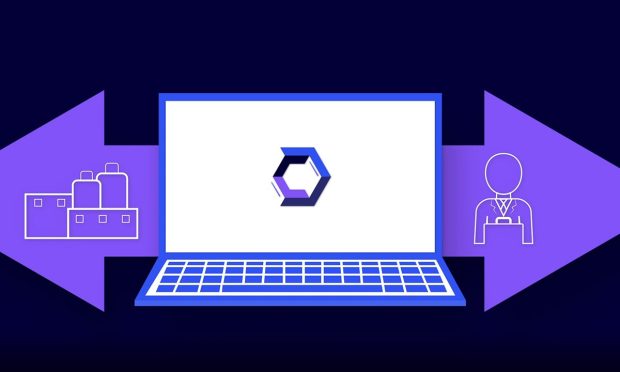It’s All About Buyer/Supplier Chemistry as B2B Chemical Marketplace Heats Up

Few verticals are as vital or as global as the chemical industry, where the raw materials that cross borders find their way into everything from computer chips to potato chips. Shortages of those chemicals and bottlenecks in supply chains ultimately translate into shortages on shelves of everything from beauty products to paint cans.
And yet, the chemical buying process itself, in which buyers connect with suppliers, place orders and get them fulfilled, is archaic and paper based. As ChemDirect CEO Tyler Ellison told Karen Webster, “It’s extraordinarily opaque.”
It’s a highly fragmented market, too, said Ellison, marked by $6 trillion in sales volume but where even major players have low single-digit market share.
It’s also marked by intermediaries including distributors, so transparency into end demand (and supply) is, to put it mildly, less than optimal. There are any number of causes of friction in the supply chain, said Ellison, tied to regulatory and political events — everything from pandemics to production disruptions to tariffs.
The inefficient sales cycles can be improved considerably, he said, with two-sided automated, direct and digital marketplaces that bring buyers and sellers online in an experience that changes not just sourcing and price discovery, but the entire procurement process.
The urgency is there, and Ellison said ChemDirect’s genesis stems from his own time as CEO of a chemicals manufacturing company that led to frustration with lack of visibility into end markets and the multiple steps involved in getting orders in place.
The conversation came amid ChemDirect’s announcement earlier this month that it had launched version 2.0 of its website, with enhanced point, click and buy capabilities, as well as faster delivery speeds.
In terms of mechanics, as the platform is embedded into enterprise resource planning (ERP) systems via application programming interfaces (APIs), a chemical buyer can shop on the marketplace for the best pricing from verified chemical suppliers and manufacturers. The manufacturers, he said, are vetted (internally) by the platform (additional verification and security checks come from the payments partners).
Suppliers are given a digital storefront at no cost, allowing buyers to shop directly and access those suppliers’ marketing materials and accreditation certificates. Along the way, he said, eliminating the distributors from the equation (and from the marketplace) allows those suppliers to build up their brands as they become known and trusted by the buyers.
Finding the Tipping Point
In constructing the marketplace, which debuted last year and took six months to build, “once we’d reached that tipping point, the customer acquisition has been very good,” said Ellison.
He added that the most recent enhancement of the site serves all manner of buyers and suppliers, from larger firms down to technical buyers (who scout for chemicals with different characteristics and even impurities) to occasional buyers who might be considered “long tail” users.
The company’s platform also has payments functionality built in. Ellison noted that ChemDirect has partnered with Balance, a B2B payments firm, and Stripe to offer terms across a range of payments optionality, from ACH to cards. The payments functionality built into the platform allows payments to be staged based on certain milestones or approvals and receipts.
And — in a departure from what seems to be the fashion du jour — no blockchain or cryptocurrencies are in the mix.
The Logistics Puzzle
Beyond payments, Ellison said that one key failing of most B2B eCommerce sites centers on the fulfillment side of the equation. The average time till fulfillment in the chemicals space lasts anywhere from 12 to 20 weeks; the average fulfillment time with ChemDirect is three and a half days.
“One of the of the things we’ve learned about institutional buyers is that they like a permission-based system,” he said. “If you’re the procurement director, you might have 15,000 of monthly permissions to buy, and we’ve digitized that whole process. Knitting together a more digital value chain and skipping all those steps benefits everybody.”
That shortened fulfillment time has positive ripple effects up and down supply chains as firms cut down on their inventory and re-ordering costs, he said.
In the future, the platform will continue to bring buyers and sellers together globally, with focus on the largest production regions in Asia, including India and China, and the largest consumption regions, marked by the U.S. and western Europe, he said.
Further advances in payments will be tied to continued efforts to understand the processes and constraints around foreign producers. As Ellison said: “Some of them need prepayments, others do not. Still other firms can ‘forward position’ inventory under a range of terms. We need to map out workflows before we overlay solutions.”
Monetizing the Data
The wealth of data accumulated on the platform across buyers and sellers can hint at changes in the market in the surpluses or shortages that loom. Case in point: Ellison recounted how in the early throes of the pandemic, isopropyl alcohol (and all the things that go into it) saw spikes in demand in the thousands of percentage points. In March of last year, ChemDirect was among the only places that had access to isopropyl alcohol. Passing the demand data along to the manufacturer allowed it to adjust its production.
“We consider ourselves the demand scouts of the industry,” he said, with data that may be, eventually, monetized while “creating a B2C experience in a B2B marketplace.”
